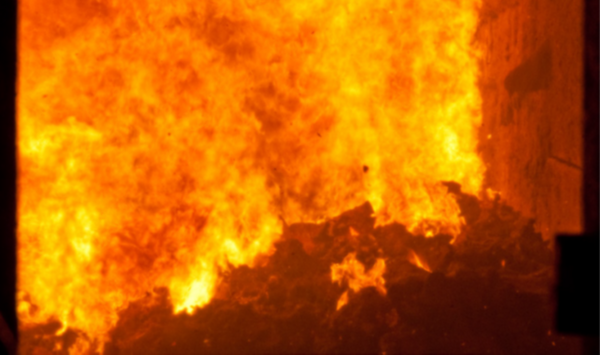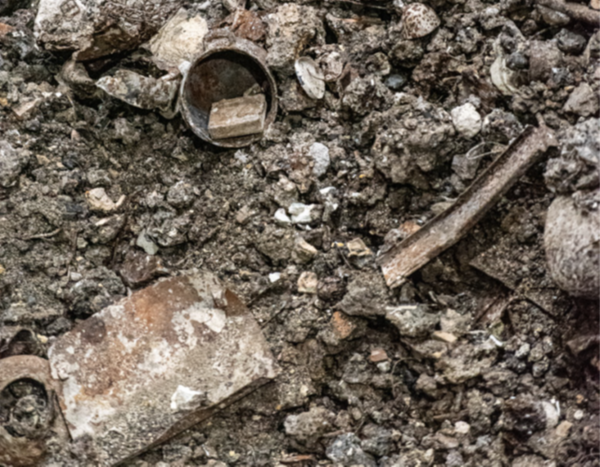EMSARZEM
EMSARZEM - Waste incineration slag as a raw material for cement production
Resource-efficient circular economy - construction and mineral material cycles (ReMin)
Slag from waste incineration is being used less and less as a substitute building material and is often only used in landfill construction. Yet a good six million tons of this material are produced in Germany every year. EMSARZEM intends to use innovative processes to process the slag as a raw material for the cement industry.
The project is being funded as part of the "Resource-efficient circular economy - construction and mineral material cycles (ReMin)" funding measure. "ReMin" is part of the BMBF research concept "Resource-efficient circular economy" and is aimed at resource-efficient construction and the expanded use of mineral secondary raw materials from construction waste, slag, ash and mining residues.
Waste incineration slag as a raw material collector
Slag from waste incineration is the main solid residue when municipal waste is incinerated to generate electricity and heat. As these residues take up much less space and many pollutants are rendered harmless by the high temperatures, the use of waste as a fuel has a long tradition in Germany. As a result, around 6 million tons of waste incineration slag are produced in Germany every year. In recent decades, however, bottom ash has also become increasingly important as a collector of metallic and mineral raw materials. As the volume of waste is significantly reduced by incineration, raw materials such as copper, brass, iron or aluminum are concentrated in different grain size classes and are therefore easier to recover. These raw materials, which only make up a small proportion of the bottom ash, are often hardly changed by incineration and can be fed directly back into the material cycle.

Utilization of slag in the cement industry
Since only a small proportion of slag can be used as a substitute building material due to constantly changing legal framework conditions and dwindling acceptance, the partners in the EMSARZEM project are analyzing alternative sales opportunities. The focus is on recycling in the cement industry. Through an innovative combination of mechanical processing steps, the researchers are aiming to recover even more of the valuable but also disruptive metals from the slag. These valuable metals can be recycled, but the interfering metals remaining in the minerals prevent them from being used in cement production. The quality of the processing therefore has a double impact on the life cycle assessment of this process. On the one hand, metallic recyclable materials are made usable and, on the other, the slag is then cleaned by a washing process to such an extent that it can be used as a feedstock in cement industry plants. If the EMSARZEM partners succeed in covering even just five percent of the cement industry's raw material requirements with waste incineration slag, around three million tons of natural raw materials can be saved each year.
Strong partners
The project is coordinated by GKS-Gemeinschaftskraftwerk Schweinfurt, which generates heat and electricity from 180,000 tons of residual waste from the surrounding towns and districts using an integrated thermal waste recycling plant.
The two processing companies C.C. Umwelt GmbH and Remex GmbH take care of the waste incineration slag. Both companies are specialists in the processing of mineral and metallic waste materials.
DK Recycling und Roheisen GmbH is supporting the project by recycling the magnetic content of the processed bottom ash. The company specializes in the recycling of ferrous dusts, primarily from the steel industry, which are processed into foundry pig iron in the DK process.
The cement industry is represented by the long-established company Dyckerhoff GmbH, which produces up to 7.5 million tons of cement in its seven cement plants in Germany and contributes extensive expertise to the project with its own Wilhelm Dyckerhoff Research Institute.
In order to contribute the necessary experience in the field of processing plants to the project, the two plant construction companies Steinert GmbH, an expert in the construction of separation plants for metals in residual materials, and Loesche GmbH, the world market leader in the construction of mills for the cement industry, are supporting the project.
The project is being supported scientifically by VDZ gGmbH and the University of Duisburg-Essen with the Chairs of Metallurgy of Iron and Steel Production, General Business Administration (ABWL) and Production Management.

Funding measure
Resource-efficient circular economy - construction and mineral material cycles (ReMin)
Project title
EMSARZEM - Use of waste incineration slag as a raw material for cement production
Duration
01.02.2021-31.01.2024
Funding reference
033R265
Funding volume of the association
1,507,465 euros
Contact
Dr.-Ing. Ragnar Warnecke
GKS-Gemeinschaftskraftwerk Schweinfurt GmbH
Hafenstraße 30 | 97424 Schweinfurt
Phone: 09721 6580-120
Email: ragnar.warnecke@gks-sw.de
Project participants
C.C. Umwelt GmbH; REMEX GmbH; Dyckerhoff GmbH; LOESCHE GmbH; DK Recycling und Roheisen GmbH; VDZ Technology gGmbH; University of Duisburg-Essen
Data sheet
Download data sheet